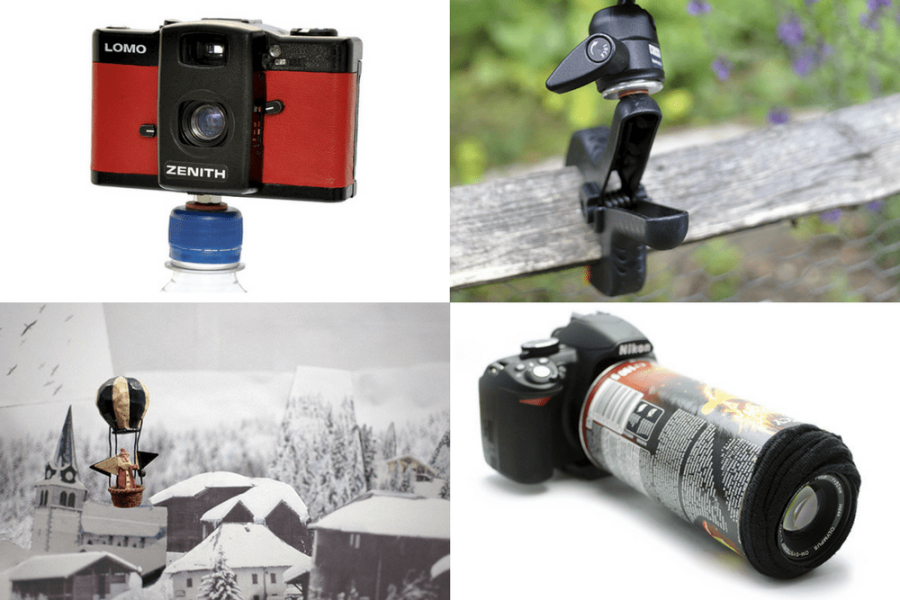As the days get shorter and the weather gets colder, Chris Gatcum has rounded up a perfect list of Christmas photography project ideas that you can try at home.
Christmas is a great time for photography, but aside from all the food and family gatherings, it’s also a great opportunity to be creative.
Whether you’re looking to make yourself some new photography kit or want to finally try out that editing trick you’ve been meaning to, here are 12 Christmas photography project ideas for you to try.
Christmas Photography Project 1: Try Freelensing
Most new cameras have a ‘miniature’ mode, and most image-editing software now offers a tilt/shift filter that will help give the impression that you are Gulliver looking down on Lilliput. However, these options typically work by blurring the top and bottom of the frame, whereas a genuine tilt-and-shift lens actually shifts the plane of focus.
‘Freelensing’ bridges the gap between these two options by allowing you to change the plane of focus but without paying for a tilt/shift lens. The principle is simple: set your camera to manual and hold your lens in front of the lens mount, rather than attaching it to the camera. Turning and tilting the lens will allow you to shift the plane of focus (and focus the lens), giving you the shifted plane of focus you want.
However, it sounds easier than it is, as the slightest adjustment to the camera or lens can throw everything off. The lens you use will also determine the success of your results – longer focal lengths, manually selectable apertures and full-frame (or medium-format) lenses are all things to look for. You will need a fair amount of patience as well! Also, a word of warning – as no lens is attached to your camera, if you are worried about getting dust on your sensor freelensing may not be a technique for you.

When you hold your lens away from the camera, flare is always likely, but here it adds to the dreamy nature of the shot
Christmas Photography Project 2: Levitation
In the pre-digital world, making something appear to ‘float’ in an image wasn’t easy, but in the digital age we have software that enables us to create the impossible. The technique I’m going to outline here will work regardless of the scale of your shot: you could use it to make an elephant levitate, or raise a compliant ant from the ground, the only difference is the support that will be needed. In this instance, I’m working with a festive still life.
The process is pretty simple, but you’ll need two shots: the first is of the background without your subject in the frame and the second has your subject in their ‘floating’ pose, albeit with a rather obvious support to hold them up (be it a stepladder, chair or something else). Your shots need to be as similar as possible, so shoot with the camera on a tripod and keep the same camera settings. Switch to manual exposure, a specific ISO (rather than auto ISO), a preset or custom white balance (again, not auto) and set the focus manually as well, so this doesn’t change, either.
When you’ve done shooting, open your ‘background’ image in your editing program. Then add the add the photograph containing your would-be floating subject on a layer above it. Because you used a tripod the images should align perfectly, so all you need to do now is ‘rub out’ the support that’s holding your subject in the air. You can do this using your software’s Eraser tool or by creating a mask.
Regardless of your method, as you remove the support the underlying layer will show through, filling the background and enabling your subject to ‘levitate’.
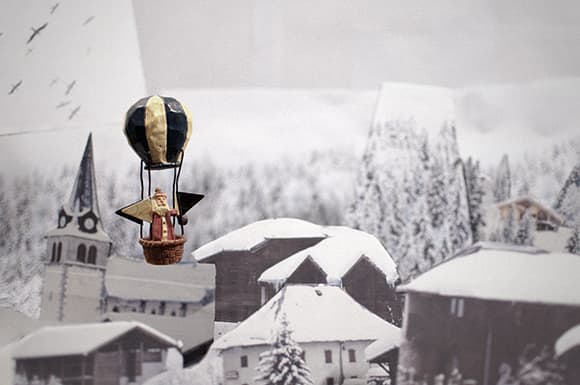
Christmas Photography Project 3: Make a Simple Beanbag

You don’t need to go to a huge amount of expense to make yourself a smart-looking beanbag
A bag of rice or lentils makes a great beanbag, but it won’t earn you any kudos when you’re out and about. However, if you have some scraps of fabric and can sew (or know someone who can), a simple beanbag cover can cost nothing more than time.
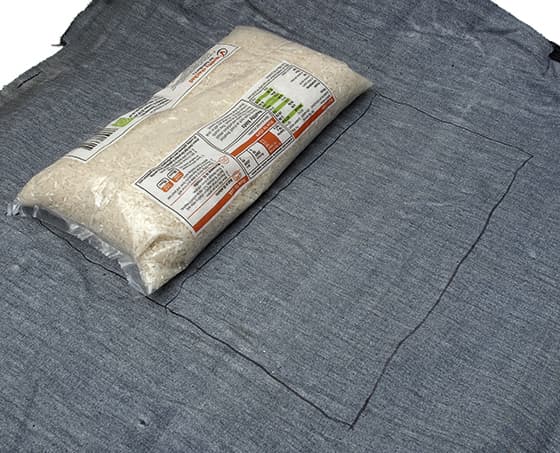
To make your beanbag cover, take your bag of rice or lentils, place it on your fabric and draw round it to create a rectangle. Move the bag and draw round it again to create two rectangles that are joined along the long edge. Add 2in (5cm) all the way round, cut out the fabric and fold it in half so it’s inside out.
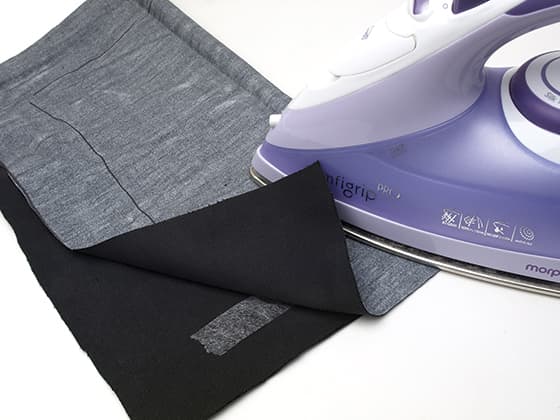
Sew along the lines you drew, or get some hemming tape (available from most supermarkets) that just needs a hot iron run over it to turn it into a strong fabric glue.

Once it’s stitched or stuck, turn the cover the right way round (so the outside is on the outside) and slip your bag of rice or lentils inside. Adding a strip of Velcro will make a neat closure for the ‘open’ side and also allows you to replace your rice or lentils.
Christmas Photography Project 4: Make a Quick-clamp
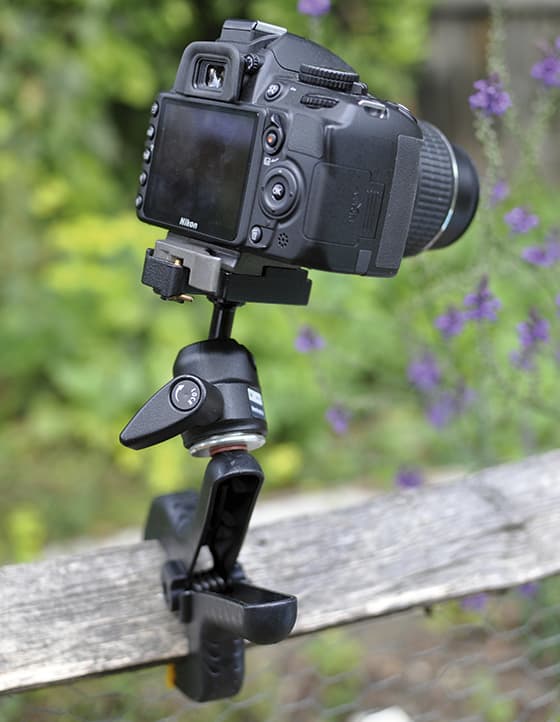
A quick clamp makes a great alternative to a beanbag, especially if you’re shooting in the urban jungle where there are usually plenty of rails and poles to clamp a camera to.
All we’re doing here is getting a heavy-duty plastic clamp, drilling a 1⁄4in (6.5mm) hole in the end of one of its ‘arms’ and then using a 1⁄2in (12mm) long, 1/4-20 bolt to attach a small tripod head. This creates an incredibly simple, yet wonderfully versatile and steady camera support that can be used to clamp your camera to a wide variety of objects. I mounted a small tripod head to my clamp, but you could also mount your camera directly if you’re willing to have it in a fixed position. This project comes with a warning, though – the heavier your camera, the stronger the clamp you will need, so a certain amount of common sense is required. This project is done entirely at your own risk!

Christmas Photography Project 5: Shoot with a Lo-fi Lens

If you’ve toyed with the idea of playing with a plastic camera, such as a Lomo or a Holga, but have been put off by their reliance on film, a ‘lo-fi lens’ may be the answer. While Lomography offers an adapter for its Diana lenses, I much prefer the ‘digital’ Holga lenses. These lenses are designed specifically for digital cameras, but retain the classic plastic construction and design of their medium-format namesake, complete with four fixed-focus distances.
Of course, the term ‘focus’ is used in its loosest sense – as with a ‘proper’ Holga camera, nothing is going to be overly crisp. You can also expect strong and uneven focus fall-off at the edges of the frame (even on an APS sensor), plus heavy vignetting and chromatic aberration – everything a lo-fi lens should give you! A word of warning, though: although Holga lenses claim to have a (fixed) aperture of f/8, they can be much slower. The Holga lens I use is in the region of f/32–f/45.
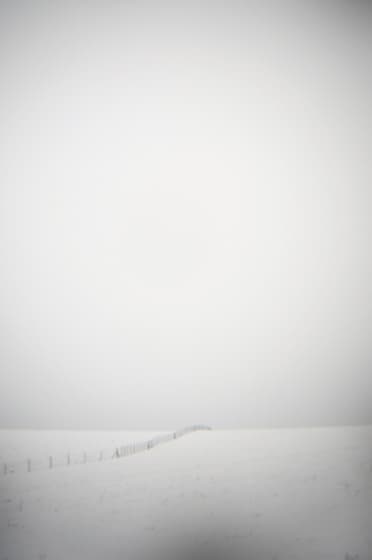
Shot taken with my Holga lens
Christmas Photography Project 6 – Try Silhouettes
A silhouette puts the ‘graphic’ into ‘photographic’, reducing your subject to a featureless dark shape against a brighter background. There’s no better time to hone your silhouette shooting skills than right now, when the sun is low in the sky for much of the day and both dawn and dusk are at a reasonable hour.However, don’t limit yourself to the colours at the ends of the day – a black & white silhouette can be just as striking, and ripe for a contrast-boosting lith effect.
There are only two things to remember for successful silhouettes: expose for the background, not the subject (your camera’s spot meter is good for this), and try to avoid having too many overlapping objects in the frame. Keeping things simple is the best option.
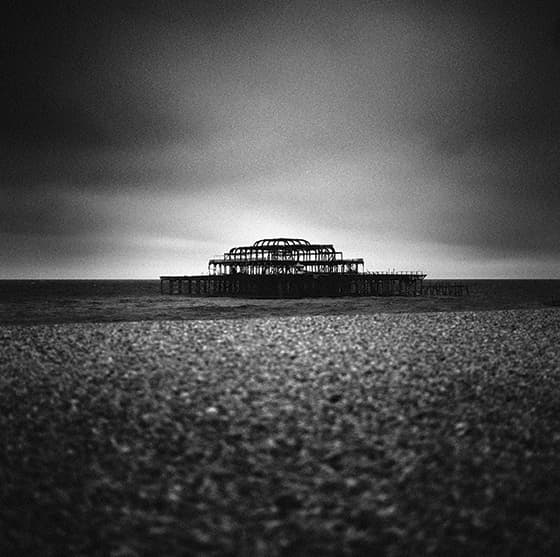
Exposing for the sky and having a subject that is clear to ‘read’ are the two key ingredients to a successful silhouette.
Project #7: Make a Bottle Cap Camera Mount
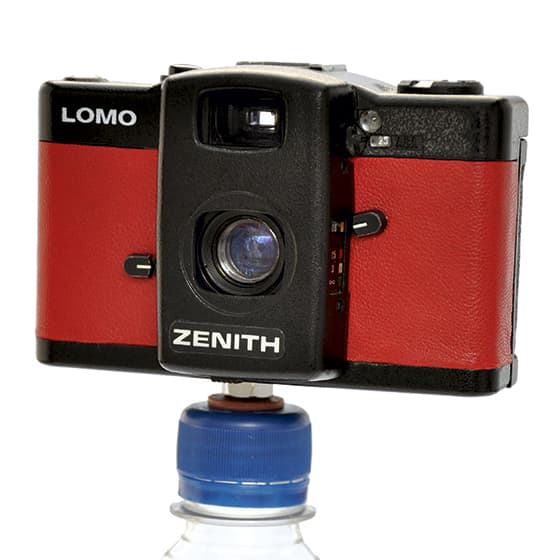
With various family visits and parties, it’s the time of year when a pocketable compact camera might take precedence over an SLR. If that’s the plan, then a bottle-cap ‘pod will let you transform a drinks bottle into a camera stand, allowing you to use longer shutter speeds instead of cranking up the ISO (and noise).
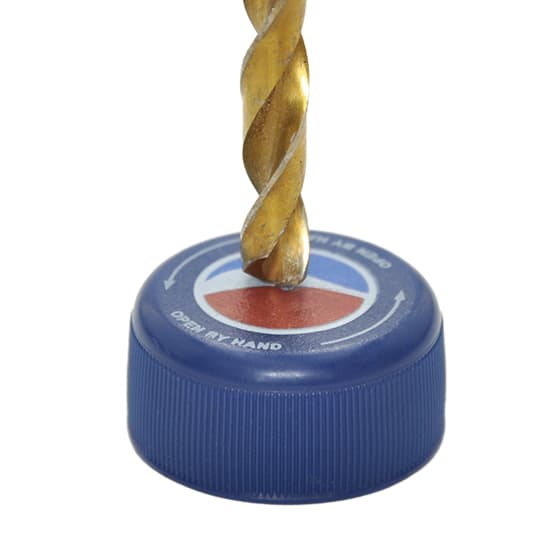
Having sourced a cap, drill a hole through it using a 1⁄4in (6.5mm) drill bit.
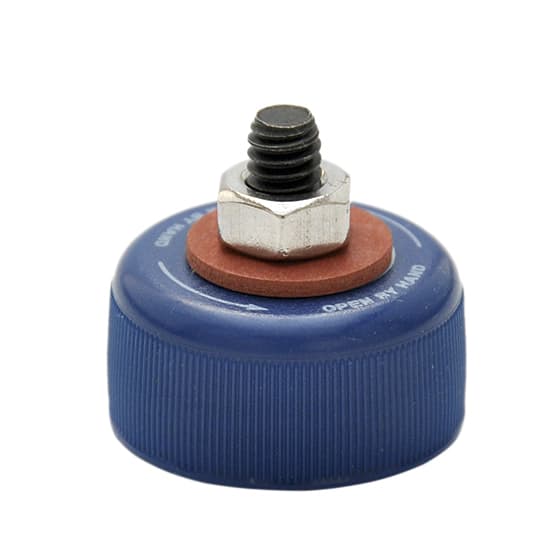
Slide a 3⁄4in (90mm) long, 1/4-20-sized bolt through the hole from the inside of the cap, then fit a washer and a nut on the outside.
Christmas Photography Project 8: Single Camera Stereo
Stereo photography is often seen as being quite involved, with a need for specialist twin-lens cameras or two cameras mounted side-by-side. But it doesn’t have to be that way: if you limit yourself to static subjects, it’s possible to produce a stereo pair with just one camera and free software. The process starts with you shooting two images of the same subject, shifting the camera horizontally between exposures. Use aperture priority or manual exposure to ensure the depth of field doesn’t change, and set the focus manually.
The amount of ‘shift’ you need between your shots depends on the subject distance, shift distance and a bit of geometry as well, so the easiest option is to shoot more images than you need, shifting the camera a little more each time. This means you have a number of potential combinations that can create your stereo pair. Once you’ve shot your images, copy them onto your computer and use StereoPhoto Maker to combine them. This is a free Windows-only program that you can download from stereo.jpn.org/eng/stphmkr.
Several guides are available via the website to get you started. In essence, though, you need to determine the pair of your exposures that will work best and the software will then align and optimise them for you, making them ready for printing or viewing on screen using the classic ‘cross-eyed’ method.
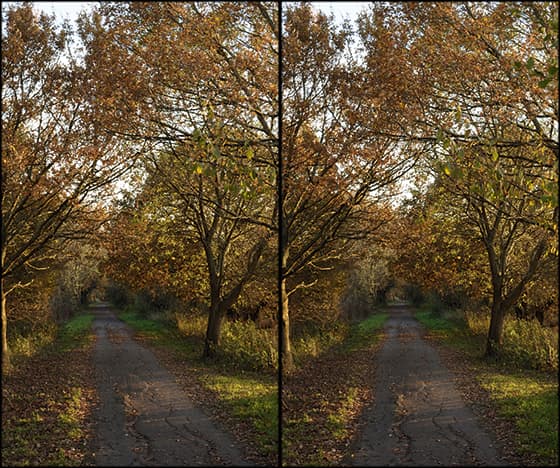
A finished stereo pair, complete with a narrow space between the images to aid cross-eyed viewing.
Christmas Photography Project 9: Make a Macro Tube
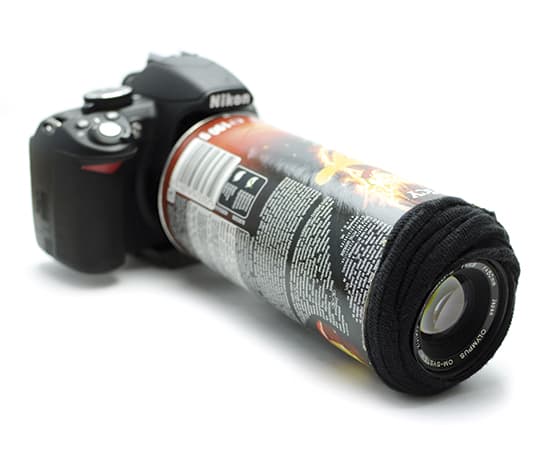
You can turn the metal and cardboard packaging from a crisps tube into a ‘super’ extension tube.
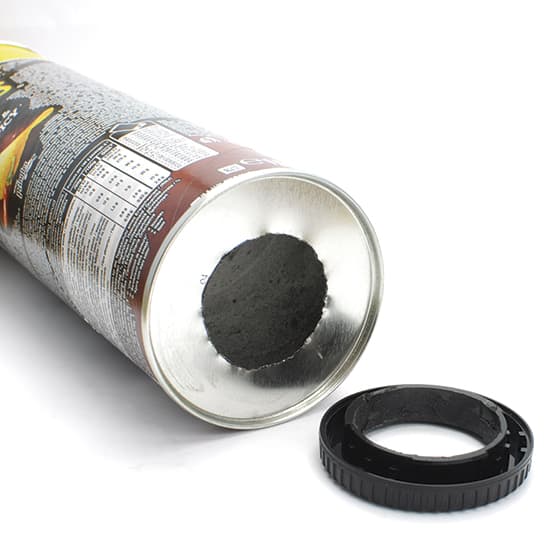
The conversion starts with a spare body cap that will need its centre removed to create a crude lens mount. Use your modified cap to mark a circle on the metal base of your crisp can and (carefully) cut this out using a Dremel or other cutting tool.
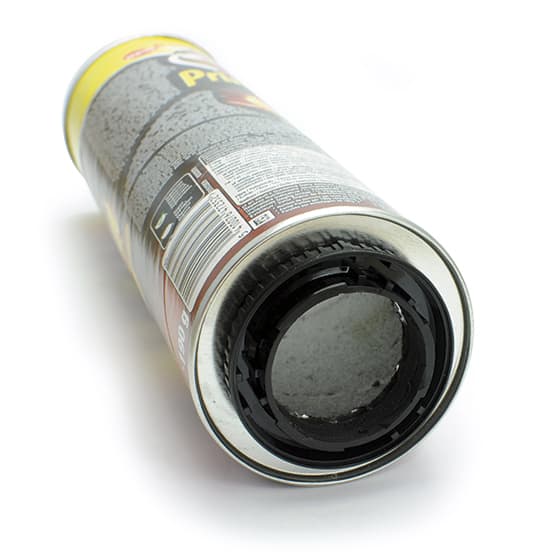
Line up the holes in the body cap and the crisp can, and glue the two parts together with a glue gun or epoxy resin.
Once the glue has dried, cut your crisp can to length. The longer the tube, the greater the magnification, but the more light will be lost (requiring a longer shutter speed or higher ISO). With your tube cut to size, it’s time to mount your lens. A 50mm prime lens is ideal, and as you aren’t actually ‘mounting’ the lens it doesn’t need to match your camera mount – a manual-focus lens with a manual aperture is ideal – the same lens can also be used for freelensing.
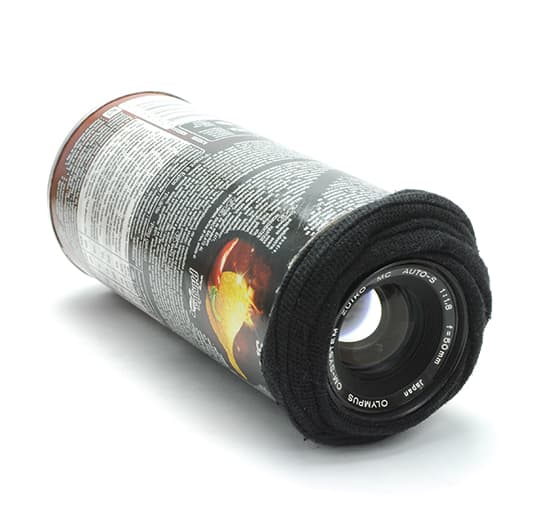
To fit the lens, wrap it in cloth (I chose an old black sock) and wedge it in the end of your tube to create a light-tight seal.
Your exposures will have to be set manually and you will have to focus by moving the camera backwards and forwards, but despite these limitations it’s still possible to produce some striking results – you can even turn the lens slightly to create a ‘tilt’ effect.
Christmas Photography Project 10: Create a Photo Cube

A photo cube serves no practical purpose, but it is a great way to display six festive photographs as you enter the New Year.
To start with, you’ll need to find a cube template – if you search online you’ll find dozens that fit the bill and are free to use.
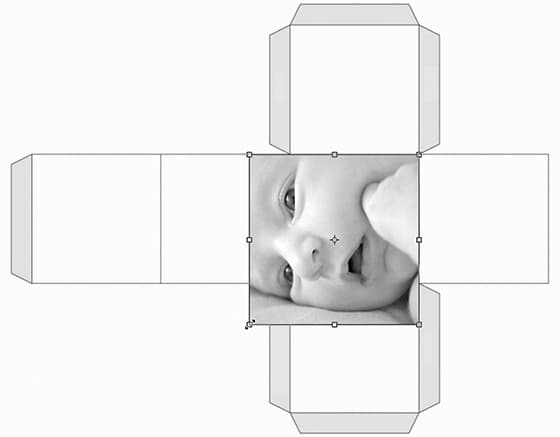
Open the template in your editing program, followed by the images that you want to put on your cube. If your images aren’t square, use your software’s Crop tool to change their shape, then drag the images one at a time onto your cube template.

Position an image on each of the six faces, resizing them as necessary so they fit the template. Each image will be on its own layer, so at this stage you can edit them individually or use adjustment layers (if your software has this feature) to make universal changes – to convert them to black & white, for example.

When you’re done editing, flatten the layers and print the template onto thick photo paper, or mount your print on thin card. Cut the template out, score along the lines, then fold and glue the tabs to finish your cube construction.
Christmas Photography Project 11: Make a Panning Device for Time-lapse
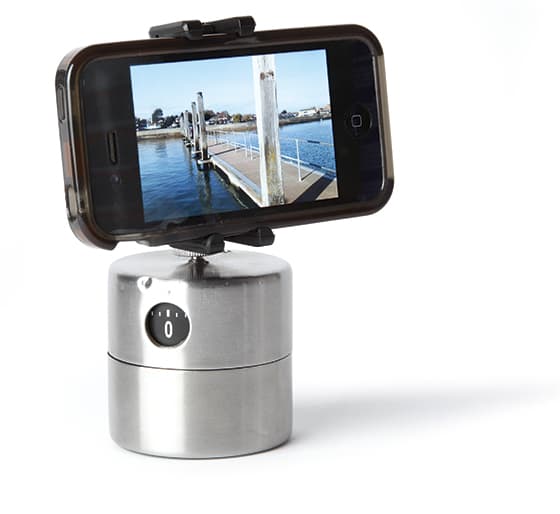
If you want to add a panning movement to time-lapse videos this is a simple solution. You need a 60min kitchen timer with a hole drilled in the top that is large enough to fit a 1⁄4in tripod screw. Be careful when drilling as there may be some mechanical parts inside the timer that could be damaged. With most timers it is fairly easy to pull them apart so you can see what you are doing.
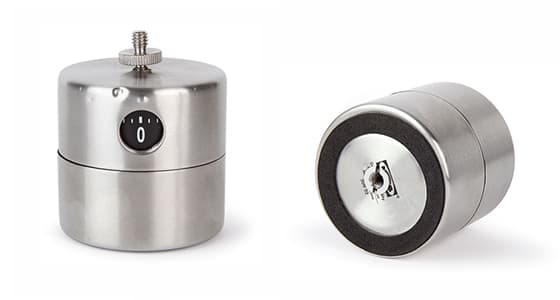
With the hole drilled, fix the tripod screw into place. For added rigidity, you may want to secure it in place by using some epoxy resin and a rubber washer. A small compact camera or even a mobile phone in a tripod case can then be attached to the timer. Turning the timer all the way round will allow the camera to rotate 360° over the course of one hour. Using the camera’s intervalometer, you can set it to take pictures every few seconds to create a time-lapse video. The more frequent the images, the longer the time-lapse video will be. For example, one image every second would create 3,600 images, which would be a 120sec video at 30fps. One image every 3secs for 30mins would create 600 images and a 20sec video at 30fps. As an optional extra, drill a second larger hole at the bottom and fit a 3⁄8in to 1⁄4in tripod thread adapter to allow you to mount the panning device to a tripod.
Christmas Photography Project 12: Make a Movie Grip
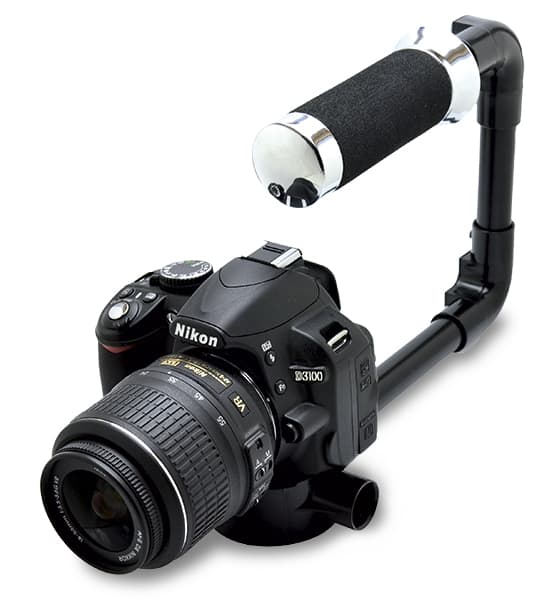
This DIY movie grip may look rudimentary, but it makes a huge difference when filming – especially if shooting from a low angle
The quality of the video that can be shot using a DSLR or CSC has increased rapidly in the past years, resulting in a bewildering array of video-orientated grips being sold. However, you don’t need to spend a huge amount to make your camera more video friendly, as this DIY grip proves.
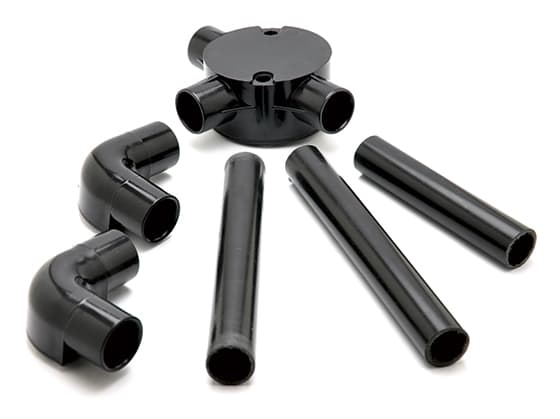
The key ingredients are: plastic pipe (you will need roughly 60cm of 20–25mm diameter tube); two right-angle adapters to fit the pipe; and some sort of flat ‘plate’ to mount the camera on. I used 20mm conduit pipe with an inspection box for the camera base, and came home with change from £10 from the hardware shop.
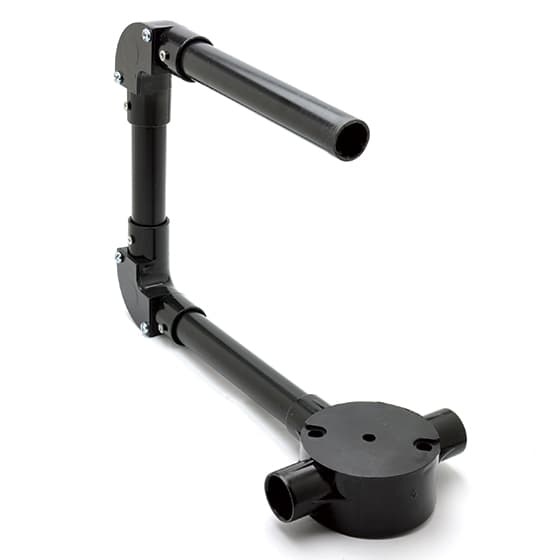
The aim is to create a rough ‘C’ shape, so you need to cut your pipe into three lengths. The lengths don’t have to be equal as they will depend largely on the size and shape of your camera – about 10–20cm will be about right, but there are no hard and fast rules. Use the right-angle adapters to connect the pipes and form your ‘C’, gluing them together and possibly screwing or bolting them for added security (remember, you’ll be attaching your camera to this bracket).
For the base, I drilled a hole through the inspection box so I could fit a 1⁄2in (12.7mm) long, 1/4-20 bolt to attach the camera, and the finishing touch came in the form of a spare motorcycle handlebar grip I had kicking around my garage (foam pipe insulation, grip tape for bicycle handlebars or tennis rackets, or just the bare pipe would work just as well). It may look fairly rudimentary, but it makes a huge difference when you’re filming – especially if you’re shooting from a low angle.

